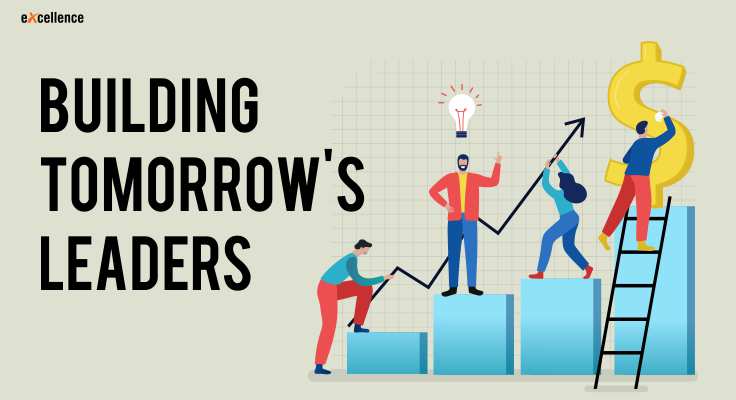A Leadership Development Plan is an essential tool for ensuring your organization has a continuous pipeline of future leaders. The long-term success and evolution of any organization are directly linked to the growth and development of its leadership. Crafting a well-structured leadership development plan enables organizations to systematically identify, nurture, and prepare the next generation of leaders to meet the demands of an evolving business landscape.
- Identifying and Assessing Talent
Many organizations rely on formal leadership development programs and talent pools to identify high-potential individuals. However, organizations without structured talent identification processes can still implement robust mechanisms for spotting future leaders. Begin by assessing performance, initiative, and problem-solving capabilities across various levels. But remember, leadership goes beyond just tactical skills—strategic thinking and the ability to lead with foresight are equally important. The goal is to find those who can grow beyond operational demands and contribute to long-term organizational goals.
- Empowerment Through Distributed Responsibility
Effective leadership development isn’t about centralized control but rather empowering individuals at all levels of the organization. Leaders should delegate authority and push decision-making down the hierarchy. By doing so, potential leaders are provided opportunities to take calculated risks and learn from real-world consequences. This distribution of responsibility not only fosters autonomy and innovation but also increases the collective intelligence, resilience, and adaptability of the organization.
- Promoting Transparency and Open Communication
In many organizations, information flow remains hierarchical, with key data withheld from those not at the top. However, in an era that demands agility and responsiveness, withholding information hinders decision-making and limits strategic insight. Leadership development should involve fostering an environment of transparency where information is shared openly. This approach builds confidence among emerging leaders, encouraging them to question decisions, propose new ideas, and contribute meaningfully to the organization’s strategy.
- Network Building and Peer Interactions
Developing a strong professional network is one of the most valuable assets for any leader. Encourage leaders to continuously expand their networks, both internally and externally. A network not only provides opportunities to exchange ideas but also serves as a support system to navigate leadership challenges. Structured feedback sessions, peer reviews, and collaborative learning environments help future leaders refine their skills. Online courses, such as Leadership Principles, offer interactive exercises where leaders can evaluate and improve their effectiveness in business scenarios through peer-to-peer feedback.
- Emphasizing Experience-Based Learning
Most traditional leadership programs focus on classroom-based learning, which often prioritizes theory over practice. While knowledge-based learning is important, experience-based learning is critical for developing strategic leadership skills. Practical, on-the-job experiences allow future leaders to apply their learning in real-world scenarios, make decisions, and learn from outcomes. Organizations should create opportunities for experiential learning, such as job rotations, cross-functional projects, and challenging assignments that encourage leaders to think strategically and lead effectively.
- Delegation and Empowerment
Delegating responsibility is not just a management tactic, but a leadership development strategy. When leaders delegate important tasks, they provide team members with opportunities to demonstrate their abilities, take ownership of outcomes, and build self-confidence. By entrusting others with key responsibilities, you cultivate a culture of empowerment and accountability. It is vital, however, to pair delegation with the necessary authority, allowing individuals the autonomy to make decisions and drive results.
- Commitment to Continuous Growth
Leadership is a continuous journey. Exceptional leaders understand that learning never stops—they are always refining their skills and expanding their knowledge. This commitment to lifelong learning should be ingrained in any leadership development plan. Encourage future leaders to seek ongoing education, participate in mentorship programs, and engage in reflective practices. Continuous growth is critical in staying ahead of industry changes and adapting to new challenges.
- Adapting to Post-COVID Challenges
The COVID-19 pandemic has shifted how businesses operate, forcing leaders to adopt new practices and innovate rapidly. Leaders must now develop digital and cultural intelligence to thrive in this new environment. Adapting to the demands of the times means being agile, embracing technology, and focusing on inclusivity. Leaders must also ensure that their teams and future leaders are equipped to navigate this complex landscape.
- Developing Future Leaders for Crisis and Opportunity
In times of crisis, potential leaders may feel overwhelmed by volatility, but they are also inspired by the opportunities that arise. Investing in leadership development during such times is crucial to maintaining organizational momentum and resilience. By equipping future leaders with the necessary tools, knowledge, and experiences, you prepare them to confront challenges head-on and capitalize on opportunities.
Conclusion
A Leadership Development Plan is more than a strategy; it is an investment in the future of your organization. By creating a comprehensive plan that focuses on talent identification, empowerment, transparency, network building, experiential learning, and continuous growth, organizations can cultivate leaders who will drive future success. Today’s leaders must be equipped to meet not just the challenges of today, but also the unforeseen demands of tomorrow.













